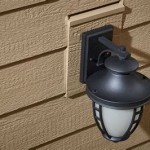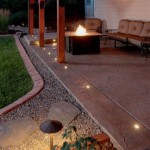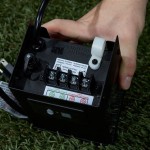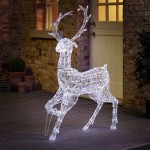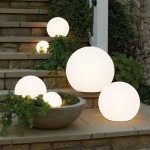Motion Sensor Outdoor Light Problems: Identification and Resolution
Motion sensor outdoor lights are a common security and convenience feature for residential and commercial properties. Their automated operation, triggered by movement, offers illumination when needed, deterring potential intruders and providing safe passage in low-light conditions. However, these lights are not immune to malfunctions. Understanding the common problems associated with motion sensor lights and knowing how to troubleshoot them is crucial for maintaining their functionality and ensuring continued security.
Various factors can contribute to motion sensor light issues, ranging from environmental conditions to wiring complexities. Addressing these issues often requires a systematic approach that involves identifying the specific problem, understanding its potential causes, and implementing appropriate solutions. This article provides a comprehensive overview of common motion sensor light problems and offers practical advice for troubleshooting and resolving them.
False Triggering: Unexplained Activation
One of the most frequently encountered problems with motion sensor lights is false triggering, characterized by the light turning on without any visible movement. This issue can be disruptive, wasteful of energy, and potentially annoying to neighbors. Several factors can contribute to this unwanted activation.
Environmental Factors:
Weather conditions play a significant role in false triggering. Strong winds can sway trees or bushes, triggering the motion sensor. Similarly, heavy rain or snow can reflect light or create movement that the sensor interprets as activity. Extreme temperature fluctuations can also affect the sensor's sensitivity, leading to false alarms. Installing a shield or adjusting the sensor's sensitivity can mitigate these effects. Trimming vegetation near the sensor can also reduce wind-induced activation.Animals:
Small animals, such as birds, squirrels, or cats, can inadvertently trigger motion sensors. Their movements, especially during dawn and dusk, can be sufficient to activate the light. Relocating the sensor or adjusting its angle can sometimes alleviate this problem. Some motion sensors include features to ignore smaller objects, focusing detection on larger movements associated with people.Reflected Light:
Reflected light from passing cars, shiny surfaces, or even swimming pools can trigger the sensor. The sensor's detection area should be assessed to eliminate any potential sources of reflected light. Repositioning the light fixture or adjusting the sensor's range can help reduce this type of false activation. Consider painting reflective surfaces with a matte finish to minimize light reflection.Electrical Interference:
Electrical interference from nearby devices or power lines can also cause false triggering. Fluorescent lights, radio transmitters, or even faulty wiring can create electromagnetic interference that affects the sensor's operation. Ensure that the motion sensor is properly grounded to minimize the impact of electrical noise. Consider moving the sensor away from potential sources of interference or using a shielded cable to reduce electromagnetic pickup.Light Stays On: Failure to Shut Off
Another common problem is the light staying on continuously, even when there is no motion detected. This can be caused by several factors, including incorrect settings, faulty wiring, or a malfunctioning sensor.
Sensitivity and Timer Settings:
Many motion sensor lights have adjustable sensitivity and timer settings. If the sensitivity is set too high, the sensor may be continuously triggered by ambient light or minor movements. Similarly, if the timer is set to a long duration, the light will remain on for an extended period after each activation. Review the manufacturer's instructions and adjust these settings accordingly. Decreasing the sensitivity and shortening the timer duration can often resolve this issue. Ensure the sensor is not set to "test mode" which is intended for setup and often overrides the automatic shut-off.Wiring Issues:
Faulty wiring, such as loose connections or damaged wires, can also cause the light to stay on. Check all wiring connections to ensure they are secure and properly insulated. Look for any signs of damage to the wires, such as fraying or corrosion. If you are not comfortable working with electrical wiring, it is best to consult a qualified electrician. A short circuit in the wiring can also cause the light to remain on continuously. Using a multimeter, an electrician can check the wiring for shorts or other electrical faults.Sensor Malfunction:
In some cases, the sensor itself may be malfunctioning. This can be due to internal damage or a manufacturing defect. If you have ruled out other potential causes, consider replacing the sensor. Before replacing the entire fixture, check if the sensor module is a replaceable component. Replacing just the sensor module can be more cost-effective than replacing the entire fixture.Manual Override:
Some motion sensor lights have a manual override feature that allows the light to be turned on and left on continuously. Check the switch or control settings to ensure that the manual override is not engaged. Turning the light switch off and then quickly back on may toggle the override feature, depending on the model.Light Does Not Turn On: Complete Inactivity
A motion sensor light that fails to turn on when motion is detected presents a different set of challenges. This can indicate a power supply issue, a faulty sensor, or incorrect settings.
Power Supply Problems:
The first step in troubleshooting a non-responsive light is to check the power supply. Ensure that the circuit breaker or fuse controlling the light is not tripped or blown. Verify that the light switch is in the "on" position. Use a multimeter to check the voltage at the light fixture to confirm that power is reaching the unit. If there is no power, investigate the wiring and electrical connections upstream from the fixture.Bulb Issues:
A burnt-out bulb is a common reason for a light not to turn on. Even if the bulb looks intact, it may be defective. Replace the bulb with a new one of the correct wattage and type. If the light still does not turn on, proceed to the next step. Consider using LED bulbs designed for motion sensor lights, as they often have a longer lifespan and are more resistant to frequent on-off cycles.Sensor Failure:
If the power supply is good and the bulb is working, the sensor may be faulty. Test the sensor by waving your hand in front of it at different distances and angles. If the light still does not turn on, the sensor likely needs to be replaced. Consider the age of the sensor; sensors are devices that can degrade over time due to environmental factors. Also, when replacing consider that some sensors work poorly in specific climates, notably cold climates.
Range and Sensitivity:
Motion sensors have a limited range of detection. Moving beyond that range may prevent activation of the light. Sensitivity settings could also be involved by requiring very large movement for the sensors to trigger.Photocell Issue:
Motion sensor lights often include a photocell that prevents the light from turning on during daylight hours. If the photocell is malfunctioning or if it is not properly calibrated, it may be preventing the light from turning on even when it is dark. Cover the photocell with a dark cloth to simulate nighttime conditions. If the light turns on, the photocell is likely the problem. Clean the photocell to ensure that it is not obstructed by dirt or debris. If cleaning does not resolve the issue, the photocell may need to be replaced.Addressing motion sensor outdoor light problems requires careful observation, systematic troubleshooting, and a basic understanding of electrical systems. When dealing with electricity, safety should always be a top priority. If uncertain about any aspect of the troubleshooting process, consulting a qualified electrician is recommended.

Motion Sensor Lights Tips To Reset Detector

How To Troubleshoot Motion Detector Lights Solutions For Every Problem

A Short Guide To Fixing And Replacing Faulty Motion Sensor Lights

How To Troubleshoot Motion Detector Lights Solutions For Every Problem

Motion Sensor Lights Are They Worth It Air Conditioning Repair For Huntsville Madison Al Hvac Tips

Light Sensor Test Trouble Shooting

How To Reset Outdoor Motion Sensor Lights Electronicshub

Light Sensor Test Trouble Shooting

How To Reset A Stuck Motion Sensor Light Mr Electric

How To Troubleshoot Motion Detector Lights Solutions For Every Problem
Related Posts
